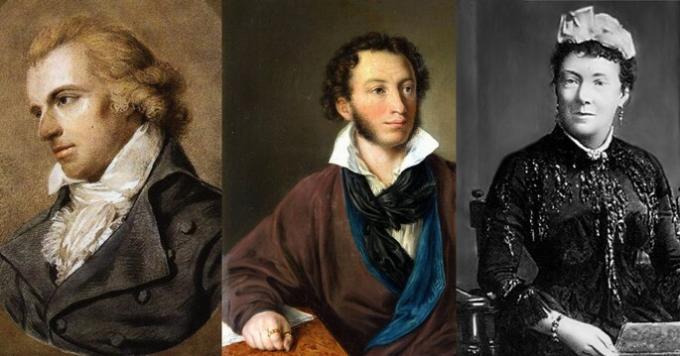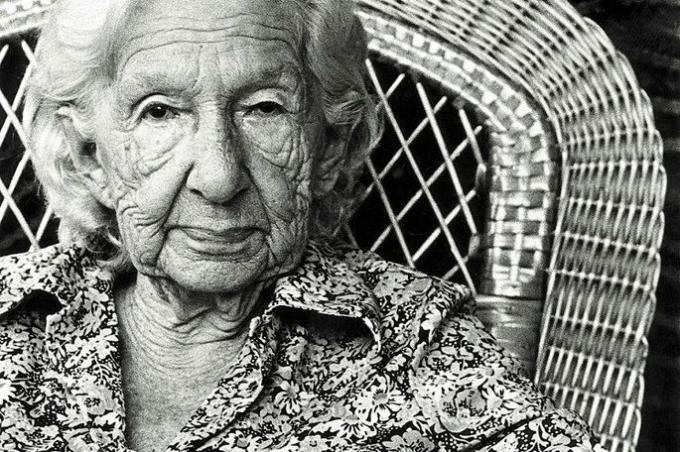In literature, the Period Styles (also called Literary Schools or Literary Movements) represent the set of aesthetic procedures that characterize the literary production of a given historical period.
They are concentrated from similar characteristics among the works of literary producers, in this case, the writers.
In other words, period styles arise as individual artistic processes become repetitive and constant.
They are marked by a certain historical period according to their aesthetic and ideological values, creating thus, a generation of writers and, consequently, of literary works that have characteristics similar.
Individual Style
O Individual Style or Personal Style designates the particular mode used by each writer in composing his works.
That is, it represents the set of stylistic or thematic characteristics (in the form or content of the poetic construction), which had been included in a given literary school, according to the period lived (historical-context) or even by the characteristics that stand out in his work.
In this way, we can think of the writer Machado de Assis (1839-1908) who is part of the romantic and realist movement, since his works contain characteristics of both schools.
Period Styles in Brazilian and Portuguese Literature
All literary production was didactically divided into “Ages or Epochs”.
Within them, the "Schools, Movements or Currents”, which represent a specific historical period, full of writers and works, which have stylistic and thematic similarities and share styles and worldview.
Note that any literary work presents marks of the context in which it was produced, whether in the social, political, cultural or ideological sphere of the period in question.
At Literature of Portugal, the Eras are classified into: Medieval, Classical and Modern, and within each one there is a set of literary movements.
- At medieval era the literary movements of Troubadourism (1189) and Humanism (1418) are united.
- At was classic there are schools: Classicism (1527), Baroque (1580) and Arcadismo (1756).
- At modern era, also called Romantic Era, are the movements: Romanticism (1825), Realism-Naturalism (1865), Symbolism (1890) and Modernism (1915).
THE Brazilian literature it is formed by two Eras: Colonial and National.
- At colonial era the literary schools of the 16th century (1500), Baroque (1601) and Arcadianism (1768) are united.
- At National era they are: Romanticism (1836), Realism/Naturalism/Parnasianism (1881), Symbolism (1893), Pre-Modernism (1902) and Modernism (1922).
Literature Periodization
THE Literary Periodization represents the set of literary eras and schools, systematically grouped in order to facilitate the study of writers and literary art.
The division of literary schools in Portugal and Brazil differ at the time each one began to develop, however, they harbor similar characteristics.
The set of literary movements Portuguese are: Troubadourism, Humanism, Classicism, Baroque, Arcadianism, Romanticism, Realism-Naturalism, Symbolism, Modernism.
The set of literary movements Brazilians they are: 16th century, Baroque, Arcadianism, Romanticism, Realism, Naturalism, Parnassianism, Symbolism, Pre-Modernism and Modernism.
Troubadourism (12th to 14th century)
Songbooks and ditties (love, friend and mockery) stand out. The main characteristics of Troubadourism are: union of music and poetry, use of emotion, social criticism, chivalric ideal, popular traditions, profane themes and loving ones.
Humanism (15th century)
Marked by the transition from theocentrism to anthropocentrism, the main characteristics of Humanism are: focus on the psychological of the characters (historical chronicles and theater) and separation of the literary text and the poetry.
16th century/Classicism (16th century)
Classicism is the name given to the literary manifestations that took place in Portugal in the 16th century, being its main features: anthropocentrism, universalism, nationalism, predominance of reason and balance and rigor formal.
In turn, Quinhentismo is the name of the first literary manifestation that took place in Brazil in the 16th century, after the arrival of the Portuguese.
The main features of the 16th century are: Informative literature (travel chronicles) based on themes about material and spiritual conquest, and catechetical literature.
Baroque/Sixteenth century (17th century)
Emerging with the European Renaissance crisis in the Counter-Reformation period, the baroque represents the literary school of the conflict of body and soul, based on the search for humanistic values which brings together two main characteristics: cultism (word play) and conceptism (game of ideas).
Arcadianism/18th century (18th century)
Returning to the classic model, arcadism as opposed to baroque seeks objectivity, being its main features: bucolicism (nature), predominance of reason, scientism, universalism and materialism.
Romanticism (first half of the 19th century)
In the romantic period, there is a break with the classical tradition (Greek-Roman), being its main characteristics: sentimentality, nationalism, subjectivity, individuality, self-centeredness, escapism, idealization of women.
Realism (second half 19th century)
Opposed to romantic ideals, realism intended to develop a more trustworthy portrait of reality, being its main characteristics: objectivism, veracity, contemporaneity, focus on the psychological of the characters, social, urban and everyday.
Naturalism (second half 19th century)
Faced with a language closer to the colloquial, naturalism resorts to a deterministic and mechanistic view of man, so that they propose to present reality objectively.
In addition, another striking feature of naturalism is the presence of pathological characters (unbalanced and unhealthy with characteristics of morbidity).
Parnassianism (second half 19th century)
The greatest concern of the Parnassian poets was the search for aesthetic rigor, translated into the perfection of form poetic, with its main characteristics: objectivism, scientism, universalism, cult of form poetic.
Symbolism (late 19th century)
A literary movement opposed to realism and naturalism, symbolism uses musicality to propose a more subjective art, related to the imagination (subconscious and unconscious) and to the irrational.
Pre-Modernism and Modernism (20th century)
A literary transition movement between symbolism and modernism, pre-modernism emerged in Brazil at the beginning of the 20th century.
Composed of a great aesthetic variety (range of characteristics), he broke with academicism, by proposing a more close to everyday life and reality, from a colloquial language translated into regionalism and marginalization of characters.
Likewise, Modernism broke with traditionalism, proposing an aesthetic and formal liberation of literary art.
Postmodernism
Postmodernism emerged from the 50s, the postmodernist movement is still in force to the present day based on imprecision, hyper-realism, individuality and the relentless pursuit of pleasure (hedonism).
Know more about:
- literary schools
- Literary Movements
- Portuguese Literature
- Brazilian literature



